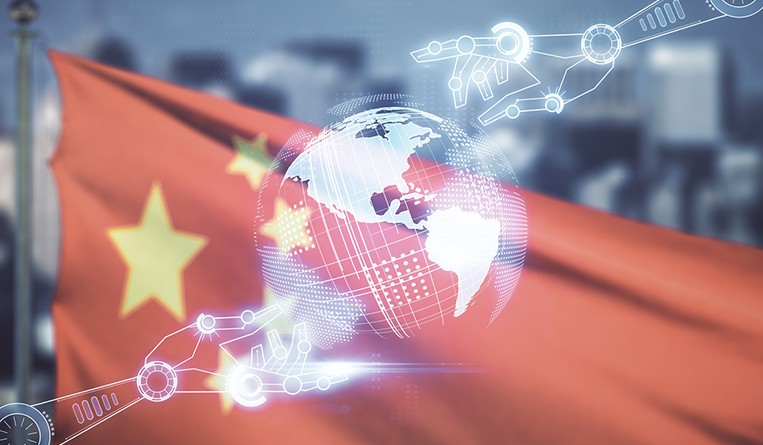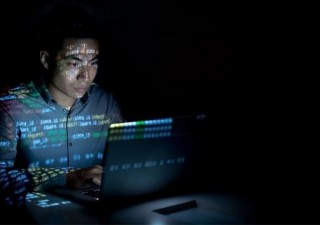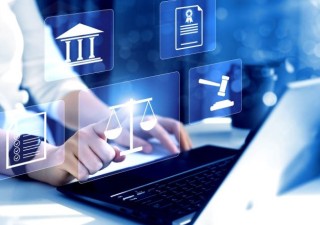In November 2022, ChatGPT made a grand debut. Compared to previous AI models, this new generation of AI showcases remarkable creative capabilities by learning and comprehending human language, imitating human art forms such as painting and music, engaging in conversations, interactions and even generating original content – ultimately exhibiting creativity on par with humans. The emerging AI technologies have not only brought about revolutionary changes in business models and market opportunities but have also attracted the attention of global regulatory agencies. How to regulate AI through legal means has become a focal point for lawmakers. Many countries, including China, have formulated laws and regulations encompassing multiple domains, such as intellectual property rights, privacy protection, data governance, and anti-monopoly, to regulate AI. This article will primarily focus on the field of intellectual property and the current legislation in China, aiming to explore the potential legal risks and protection of AI in the field of intellectual property.
Intellectual property risks brought about by AI
The development of new technologies always brings challenges to the intellectual property system from various aspects and this process is never-ending. The training data required for AI models to generate desirable results is vast, encompassing a significant amount of legally protected works, trade secrets and datasets, which brings significant challenges for legal compliance. During the AI training phase, different data sources carry their own intellectual property risks, which can be primarily summarized into the following three aspects:
First, acquiring and training data of proprietary works through methods like web crawling may potentially infringe upon copyrights. Accompanied by praises such as “the next Rembrandt,” the visually captivating “artworks” created by AI may conceal significant risks of infringement. Crawling data of works in the private domain without licensing can infringe multiple copyrights, including the right of reproduction and the right of adaptation. As mentioned earlier, the extensive training data required for AI creation is massive, which can result in a widespread occurrence of infringements.
Secondly, while data from the public domain does not raise concerns about copyright property rights, it may still involve issues related to personal rights such as the right of authorship and the right of alteration. For example, during the interactive processes between Chatgpt and users, ChatGPT’s responses may lack proper citations to the sources. Therefore, when users use the generated content without attributing it to the source, it could potentially infringe upon the personal rights of the original creators.
Thirdly, although some datasets may not meet the requirements for copyright protection, they are still property and some of them even constitute trade secrets which are protected by the Anti-Unfair Competition Law, and unlicensed use of such data may constitute infringement of the trade secrets. Furthermore, the instrumental application of AI has created new ways for secrets leaks. For example, the use of various cleaning robots is becoming increasingly widespread. Imagine a cleaning robot that can freely enter and exit business premises. The data reception server behind it could potentially collect a significant amount of classified files and information. Operational models, food recipes, and even high-end technological secrets could all be stolen by malicious actors through the exploitation of AI. It is important to pay attention to these hidden leakage risks generated by the instrumental application of AI.
Legal protection for AI algorithms and generated content
AI algorithms are a collection of mathematical and logical rules that enable computers to become intelligent. They provide a way to guide computers in performing various tasks and making decisions. Similar to how humans learn and apply knowledge to solve problems, AI algorithms analyze data, identify patterns and rules, and use this information to make predictions and decisions. They can help computers recognize images, understand language, recommend products, enable autonomous driving, and much more. Through continuous training and optimization, AI algorithms can improve their performance to adapt to different tasks and environments. There are multiple ways for protecting the intellectual property of AI algorithms:
In the field of copyright, there are multiple approaches to protect the intellectual property of AI algorithms. On one hand, algorithms can be regarded as objects similar to computer software and receive a certain degree of protection through copyright law. On the other hand, there exist numerous elements that can be individually protected as works under copyright law. For instance, descriptive textual materials and icons used within the algorithms can be protected under copyright law, indirectly contributing to the overall intellectual property protection of the application of the algorithm.
In the field of patents, according to the Guidelines for Patent Examination issued by the China National Intellectual Property Administration in 2006, China allows for patent protection of computer programs. However, prior to February 1, 2020, to meet the requirements of patent examination at that time, applicants typically used the “algorithm + device” approach to apply for patents related to AI. For example, Baidu successfully applied for and obtained a patent for “a method and device for sorting search results,” which combined algorithms and devices. This is because Article 25 of China’s patent law stipulates that “rules and methods for mental activities” shall not be granted patent rights, and it was not clear whether algorithms could be granted separate patent rights under the legal provisions. Starting from February 1, 2020, China implemented the new Guidelines for Patent Examination. The new guidelines added Section 6 in Chapter 9 of Part II, which provides detailed regulations for the examination of patent applications related to new formats and fields such as AI. Its aim is to meet the needs of innovative entities and address practical issues in the examination process. According to the provision of Article 6.1.1 of the new guidelines, if an invention patent application utilizes technical means to solve technical problems and achieve technical effects (including algorithmic features or features of commercial rules and methods), it falls within the scope of the technical solution stipulated in Article 2, Paragraph 2 of the patent law and can be protected by patent rights. This further clarifies the patentability of AI algorithms.
In the field of trade secrets, AI algorithms can also be protected. According to Article 9 of the Anti-Unfair Competition Law, trade secret means technical, operational or other commercial information unknown to the public and is of commercial value for which the right holder has taken corresponding confidentiality measures. As the core of AI companies, algorithms have tremendous commercial value, and enterprises usually implement strict measures to maintain the secrecy of their algorithms, which can be included in the system of trade secret protection. In September 2020, the Provisions of the Supreme People’s Court on Several Issues Concerning the Application of Law in the Trial of Civil Cases Involving Infringements upon Trade Secrets clarified for the first time at the national level that algorithms can be protected as trade secrets.
Apart from the protection of AI algorithms themselves, the protection of AI-generated content, including music, art, literature, and film works generated by AI, has become a controversial topic in both theory and practice. Currently, existing legislation in China has not provided a conclusive evaluation on whether AI-generated works meet the requirements of “works” under the copyright law. In domestic cases, there are completely opposite views on whether AI-generated works constitute “works”.
In the case known as the “First Dispute over Copyright of AI-generated Works,” filed by a law firm against a network technology company, the law firm retrieved keywords from the Wolters Kluwer database and used the database’s “visualization” function to generate an analysis report containing graphics and text, claiming copyright over it. However, the court ruled that the analysis report did not constitute work. In the Tencent v. Wangdai Zhi Jia case, the plaintiff Tencent accused the defendant of plagiarizing an article written by its self-developed automatic writing software without licensing. The court held that the way the writing software automatically operated reflected the choice of the plaintiff and was determined by the characteristics of the automatic writing software itself. The specific form of expression and its content of the article originate from the personalized choices and arrangements of the creator, meeting the protection requirements for literary works under the copyright law. Therefore, the court held that the article constituted literary work under China’s copyright law. This is also the first time that Chinese courts have acknowledged that AI-generated works can constitute works of authorship.
Actually, the main reason for the differing outcomes in these two cases lies in the role played by humans in the creative process. In the first case, the court deemed that the formation of the case report was merely based on simple keyword selection, which did not demonstrate sufficient originality. However, in the latter case, the court considered that the formation of the report reflected human individual choices, thus being recognized as a work. It can be seen that in judicial practice, the status of AI as a creative entity has not been acknowledged. The legal classification of AI remains as an auxiliary tool. Whether the output of AI can be recognized as a work is closely related to the intellectual activities of humans involved in the process. Only when the output reflects human intellectual activities and individual choices can it be protected as a work, with the copyright belonging to the creator of the work.
In general, the current legislation in China regarding the definition of AI-generated works in the field of copyright is still relatively lacking, and there aren’t many relevant judicial cases. In the future, we can expect more comprehensive and detailed legal documents to be issued, presenting a systematic framework for the intellectual property rights related to AI.









